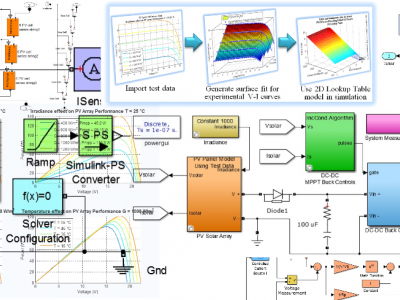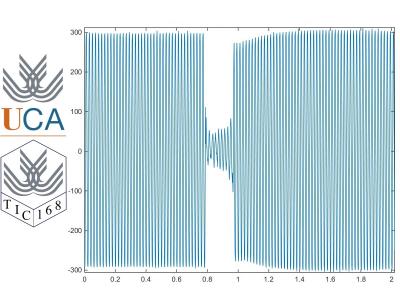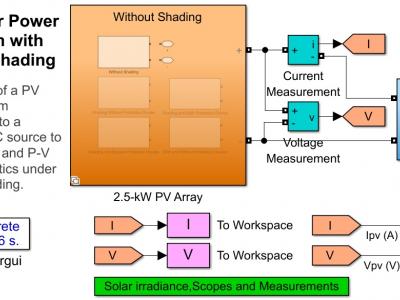Smart Grid
The work starts with a short overview of grid requirements for photovoltaic (PV) systems and control structures of grid-connected PV power systems. Advanced control strategies for PV power systems are presented next, to enhance the integration of this technology. The aim of this work is to investigate the response of the three-phase PV systems during symmetrical and asymmetrical grid faults.
- Categories:
 7744 Views
7744 ViewsThe distributed generation, along with the deregulation of the Smart Grid, have created a great concern on Power Quality (PQ), as it has a direct impact on utilities and customers, as well as effects on the sinusoidal signal of the power line. The a priori unknown features of the distributed energy resources (DER) introduce non-linear behaviours in loads associated to a variety of PQ disturbances.
- Categories:
 6424 Views
6424 ViewsSmart grids are nowadays featured by distributed energy resources, both renewables, traditional sources and storage systems. Generally, these components are characterized by different control technologies that interact with the generators through smart inverters. This exposes them to a variety of cyber threats. In this context, there is a need to develop datasets of attacks on these systems, in order to evaluate the risks and allow researchers to develop proper monitoring algorithms.
- Categories:
 317 Views
317 Views
It proposes a lossless and stateless compression method for IEC 61850 Sampled Values flows. A set of bitmaps is introduced to indicate the size in bytes of the sampled currents and voltages, and to flag the presence or absence of the Quality field. The method has been evaluated for different profiles, and it can provide bandwidth savings between 30 and 52%, with a very low computational cost as a counterpart. It has been implemented and tested in two different hardware platforms, with traffic generated by a Merging Unit.
- Categories:
 105 Views
105 ViewsThe Kirk circle is a simple and effective method for representing power graphs and visualizing their topology. In general, nodes (buses) in an electrical network are numbered with neighboring nodes assigned consecutive or closely proximal numbers. This allows for sequential mapping of these nodes in increasing order of their numerical labels to evenly spread points on a Kirk circle. In the Kirk circle, the edge connections (branches) between nodes are indicated by straight lines (chords) between the appropriate points on the circle.
- Categories:
 150 Views
150 ViewsER-SPG is a Matlab code for producing synthetic power graphs using well-known Erdos-Renyi Random Model. It scales power graphs and achieves connectivity in each scale by different approach, and accordingly connected graphs with average degree between 2 to 5 (normally between 2.3 to 3.1) can be produced by ER_SPG with the structures similar to power graphs. It also reorders the graph vertices to obtain consecutive numbering similar to power graphs. This algorithm is also provides locations of zero injection buses (ZIBs) as operational data of power graphs.
- Categories:
 983 Views
983 Views
The Integrated Energy Management and Forecasting Dataset is a comprehensive data collection specifically designed for advanced algorithmic modeling in energy management. It combines two distinct yet complementary datasets - the Energy Forecasting Data and the Energy Grid Status Data - each tailored for different but related purposes in the energy sector.
- Categories:
 1264 Views
1264 Views
This dataset proposes a new method of modelling dynamic loads based on instantaneous p-q theory, to be employed in large power system networks in a digital real time environment. In order to decrease the computational burden associated to the dynamic load modelling, a p-q- theory-based approach for load modelling is proposed in this dataset. This approach is based on the well-known p-q- instantaneous theory developed for power electronics converters, and it consts only of linear controllers and of a minimal usage of control loops, reducing the required computational power.
- Categories:
 276 Views
276 Views





